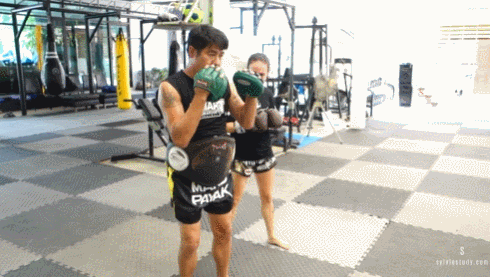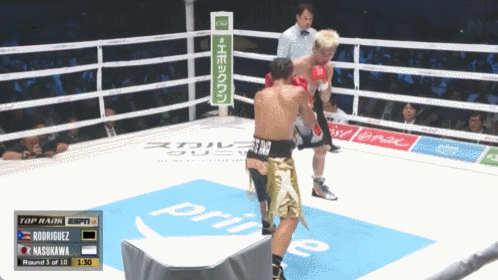Lessons from
Edwards vs Muhammad I
UFC 304 falls just a couple of weeks short of the twentieth anniversary of UFC 49. Those were the days when each pay-per-view received a straight-to-video action movie style subtitle and UFC 49’s was Unfinished Business. It made sense because the event was headlined by a do-over between Randy Couture and Vitor Belfort, after their last fight ended in 49 seconds due to a freakish cut along the lip of Couture’s eyelid. The logical successor to that Unfinished Business subtitle is this weekend’s UFC 304, where both the headliner and co-main event are rematches of that same weird kind: running back fights that only sort of happened.
Tom Aspinall versus Curtis Blaydes lasted just fifteen seconds the first time around before Aspinall’s knee gave out on one of his own kicks. If you were going to try to take a lesson away from that brief spar, it might be that Aspinall got on one leg to throw a powerful rear leg kick or knee three times in those fifteen seconds, and Blaydes stepped up the middle to throw punches on two of those. Blaydes isn’t much of a hitter, but he is a wrestler, and stepping up the inside of the kick can afford the easiest takedown in MMA. It was essentially a fifteen second fight with two / three unforced errors out of Aspinall.
Leon Edwards versus Belal Muhammad 1 makes for a much more intriguing study ahead of the rematch.
The obvious read on the first Edwards – Muhammad fight jumped off the screen to just about everyone: Edwards was uncharacteristically aggressive. That could be down to Edwards’ position in his career more than anything. He had missed out on a fight with Tyron Woodley due to the UK shutting down travel the week of that fight. Gilbert Burns took his place against Woodley and bounced straight into a title shot, while Edwards could not even get another fight for over a year. There was a great deal of pressure on him to perform, where in many of his recent fights he has either been the next obvious challenger or the incumbent champion, with less reason to take risks. Though there could be another reason: his team could have spotted in Muhammad an aversion to aggression.
When Edwards pushed forwards, he was at several points able to pressure Muhammad back to the fence. Not only did this make Muhammad an easier target, but it also put Edwards’ own back as far as possible from the cage. If cage wrestling was going to happen, it was going to be initiated by Edwards on his own terms.
But Edwards’ performance was not all forward movement, of course. He spent a lot of the fight avoiding and dropping away from Muhammad out in the open and it was in these moments that Muhammad’s gameplanning looked poor. He repeatedly attempted to double up his right hand and step through to southpaw—the classic Alexander Volkanovski look—but did so nowhere near the cage.
Fig. 1
Without the fence at his back, Edwards would drop back to his left and Muhammad would fall forward—out of control and pretty exposed to a counter.
Fig. 2
While the striking is remembered as one-sided, Belal Muhammad’s jab does stand out in review. When he got close enough to reach out and touch Edwards before throwing, Muhammad connected. Figure 3 shows a nice skipping stone type jab, where Muhammad attempts to slap Edwards’ lead hand down and throws a jab immediately off the same hand. This was lost when he began swinging with long right hands and rushing to get in.
Fig. 3
The jab-and-dip to overhand featured in Figure 4 was about the closest Muhammad got to applying continued offence and it all stemmed off jabbing effectively by standing close enough to begin with.
Fig. 4
Edwards’ performance in the fight gives us a chance to talk about the rear straight as a power shot. Traditionally, the jab is the longest weapon in the boxing arsenal. I have said and written that a great deal myself. But like everything in martial arts the truth is a classic “it depends.”
If you take your stance truly side-on, step in with your body bladed, extend your lead shoulder and draw your rear shoulder back, the jab is the longest punch you can throw. Standing in a side-on horse stance is the extreme of long jabbing, and we discussed this at length in Tommy Loughran – Advanced Striking 2.0.
Yet the majority of jabbing in modern boxing is done from the shoulder, without a full rotation of the upper body. It is done this way in consideration of combination punching. Loughran’s completely side-on, fencing jab did not lend itself well to following with power punches.
If an orthodox fighter pumps out his jab, then throws his right straight with full extension: drawing back his left shoulder so that it is behind him and almost creates a line with his advanced right shoulder, he can throw a considerably longer right straight. While he demonstrates it from a much shorter stance, here is the great Samart using his right straight to reach far beyond his jab.
Fig. 5
Against Muhammad, Edwards would fall short on his jab and land the long left straight immediately afterwards, even as Edwards gave ground off the jab.
Fig. 6
The downside of throwing the rear hand long is the same as with throwing the jab as long as possible. You blade your body and put other hand far away from the opponent. For this reason one of the key tasks in coaching boxing is “shortening” the right hand, so that the left hook fits on the end of it. Land a right straight like Samart’s above and you will push the target well out of reach out of your left hook.
Last weekend Tenshin Nasukawa returned to the boxing ring for his fourth pro fight and in the third round, he took inside foot position and blasted his opponent with a beautiful one-two. The left straight was so extended that it drove his opponent far away from any possible follow up right hook.
This circles back to a point we discussed on the podcast a few weeks ago in relation to the jab but true of many other techniques as well. If you do not have the hand speed to “establish” the jab as a standalone weapon in order to hide others, you can use set ups to sneak the jab in, and then return to showing naked jabs to continue using the jab as a set up. If you pump fake a teep and come down with a good stiff jab, the opponent does not file that jab away with an asterisk in his mind, he concerns himself only with not getting jabbed again.
Edwards snuck his left straight in on the end of his jab, at full reach and unable to follow up further. But every time he stepped in after that, Muhammad began reaching to parry the left straight.
Fig. 7
Muhammad’s right hand and elbow coming forward set up Edwards’ high kick and body kick. The high kick wobbled Muhammad in the first round. In the second round Edwards went to the body, while performing the splay fingered fake left straight that ended the fight due to eye poke.
Fig. 8
Not much of note happened in the grappling realm, but in a sub six minute bout there was still a reasonable amount of clinchwork on display. When Muhammad initiated a clinch with double underhooks later in the first round, you got to see Edwards cycle through his wiggles and leans to try and pummel in either his head post or an underhook, and he soon found his way off the fence.
The one point that did stand out was that it was Muhammad who was able to attempt a couple of elbows on the break, and this is usually Edwards’ exclusive property.
When Edwards attempted to drop on a single leg early in the opening round, Muhammad was able to circle off the cage and post his head on the overhook side (c).
Fig. 9
Using that space to turn his overhook into a collar tie (d), Muhammad switched to head posting on his right side (e), and cocked and uncorked a right elbow on the break (f), (g).
Fig. 10
If we were looking at hypothetical gameplans for the rematch, the ideal for Leon Edwards would be to do the same things he did in the first fight and face no changes in Muhammad’s approach. When they were out in the centre of the cage, he could pick at Muhammad with kicks and long left straights, and Muhammad was completely stumped by Edwards sliding back and off to his left. That fight was also in the Apex’s baby cage. Edwards will have far more space to work with in the larger Octagon that the UFC takes on the road.
Belal Muhammad needs to accept that getting hit is the price of admission. Yes, Edwards is faster than him and can pack a wallop, but that is much worse when you stand back and give him space to feint and set up his shots. Edwards does not much care for being crowded and the perfectionist in him prioritizes disengaging and setting up a more favourable exchange later on, over winning a scrappy one in the moment. Even if Muhammad cannot crowd him and force exchanges, he can force Edwards to move and use that movement to herd him towards the cage. In the first fight every engagement began and ended when Muhammad realized Edwards was going to leave range. Instead each engagement must feed into the next and each Edwards adjustment should place him closer to the cage.
Muhammad did land a cracking right kick to the body towards the end of the first fight, by getting close to Edwards and kicking as Edwards retreated onto the end of it. From jabbing to kicking to cage wrestling, everything is made better if Muhammad is consistently walking up to Edwards, rather than trying to run at him from six feet away.














